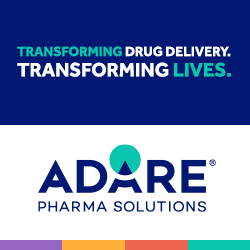Issue:November/December 2022
ARMED ONCOLYTIC VIRUSES - Instant Messaging Cancer With a TGF-Beta Trap Carrying Oncolytic Adenovirus
INTRODUCTION
Fundraisers, celebrity endorsements, marches, speeches, essays, and the like aside, the most direct way to send a “message” to cancer, and to guarantee that it is received, understood, and possibly even followed, is to use DNA, the lingua franca of the tumor cell. From a deceptively simple four-letter alphabet of adenine A, cytosine C, guanine G, thymine T, it is possible to instruct tumors and their supporting cells or stroma to stop propagating and to return to normal. Unfortunately, however, that anticancer message or signal is often lost or obscured in a sea of competing protumor noise.
Hence, to amplify the signal-to-noise ratio in tumors requires a sort of biological megaphone, which one therapy, above all else, provides — armed oncolytic viruses. An oncolytic virus, with the prefix, “onco,” meaning tumors and the suffix, “lytic,” meaning lysis or destruction, is modified, repurposed, or re-engineered to spare normal tissues in favor of selective and specific infection, replication, and destruction of cancer cells. An “armed” oncolytic virus refers to one in which an additional DNA instruction has been inserted — that extra piece of DNA, called a transgene, which serves to stimulate the immune system, for example, when it is expressed as a protein, is copied and expressed repeatedly, thousands of times, even possibly tens of thousands of times, as the virus replicates in the tumor cells, amplifying or multiplying the anticancer DNA message, in a self-sustaining, rinse-and-repeat cycle of infection, replication and lysis. To date, one oncolytic herpesvirus has received FDA regulatory approval, talimogene laherparepvec (T-VEC, or Imlygic®). Two other oncolytic viruses are also approved outside of the US: H101, an adenovirus for the treatment of advanced head and neck cancer in China, and Rigvir, an oncolytic reovirus approved for the treatment of advanced melanoma in Eastern Europe.
ADAPT-001
A Type 5 experimental oncolytic adenovirus, referring to a modified agent of the common cold, called AdAPT-001, is under clinical investigation by our company, EpicentRx. AdAPT-001 was jointly invented by the company’s two viro-oncologists, Dr. Tony Reid, MD, PhD, CEO of EpicentRx, and Dr. Christopher Larson, MD, PhD, Vice President of Viral Manufacturing. The company is focused on two complimentary platforms, ADAPT™ and CyNRGY™, that act alone or in combination with other treatments to treat cancer and chronic diseases. AdAPT-001 is the lead candidate of the ADAPT platform, into which different therapeutic transgenes have been inserted for the treatment not only of cancer but also other non-cancer indications like COVID-19.
The NLRP3 and CD47 small molecule inhibitor, RRx-001, currently in a Phase 3 trial for the treatment of small cell lung cancer (SCLC) and a soon-to-be-initiated late-stage clinical trial for protection against radiation- and chemotherapy-induced oral mucositis, is the lead candidate of the CyNRGY platform. As an NLRP3 inflammasome inhibitor, RRx-001 is described as active in cancer as well as autoimmune and chronic inflammatory conditions like Parkinson’s, Multiple Sclerosis, and Crohn’s Disease.
FORCE MULTIPLIER & NULLIFIER
AdAPT-001, which carries a TGF-b trap transgene, is currently under investigation in a Phase 1/2 clinical trial called BETA PRIME (NCT04673942) for the treatment of cancer both alone and in combination with other immunotherapies.
Dr. Reid describes AdAPT-001 as “a megaphone that serves as a ‘force multiplier’ against tumors, given that it robustly infects, replicates, and lyses them, and a ‘force nullifier’ against immunosuppression in cancer due to the production and release of the TGF-b trap transgene whose function is to bind to or ‘trap’ the protein TGF-beta (TGF-b).”
In tumors, TGF-b is overexpressed to serve several functions, all of which are detrimental to the host: 1) immunosuppression, a key determinant of therapeutic resistance 2) fibrosis, which compresses blood and lymphatic vessels, leading to reduced blood flow and hence, reduced drug transport including transport of checkpoint inhibitors and 3) angiogenesis, a sine qua non for tumor growth and metastasis.1
Dr. Reid is an internationally recognized oncolytic virotherapy thought leader who helped to develop the ONYX-015 adenovirus, precursor to the Chinese-approved H101 adenovirus. The AdAPT platform is built on a foundation of several decades of knowledge accumulated from earlier iterations of oncolytic viruses that he was involved with either as lead clinical investigator at Stanford University and University of California at San Diego (UCSD) or as a virotherapy researcher. He chose to work with adenoviruses over vaccinia, reoviruses, or herpes viruses firstly because the safety of oncolytic adenoviruses has been confirmed in many clinical trials, many of which he conducted, with mild, temporary flu-like symptoms, eg, fever, tiredness, and chills as their main side effect and secondly because of their large gene-carrying capacity.2 As a virus, AdAPT-001 is highly immunogenic on its own, an effect that is augmented or amplified by the insertion of the TGF-b trap. Because the AdAPT viruses are engineered to specifically infect tumors, they are non-contagious for humans unless directly injected.

DISRUPTING THE VIRAL GENOME
The basic philosophical underpinning of the AdAPT platform is that the more the viral genome is altered, disrupted, or edited, the less efficient infection and transmission becomes. This is logical because viruses have developed highly honed mechanisms over millions of years with which to best infect and replicate themselves. Therefore, unlike several other oncolytic viruses in development or on the market, which are over-manipulated, leading to severe attenuation of viral replication and a many-fold lower output of infectious particles compared to wild type or native virus, the AdAPT platform minimally disrupts the adenoviral genome, resulting in higher viral titers, increased lethality to tumor cells, and a faster and stronger immune response.3 Of particular interest to manufacturability and cost, the faster and the more efficient virus production is, the easier and cheaper it is to make it in-house, which our company is equipped to do in place of outsourcing to contract manufacturing organizations (CMOs).
Before initiation of the ongoing BETA PRIME Phase 1/2 clinical trial, our company studied the efficacy, safety, and biodistribution of AdAPT-001 in immune-competent mouse tumor models. The results showed that AdAPT-001 is safe, well-tolerated, and effective as monotherapy and in combination with an immune checkpoint inhibitor. Moreover, the TGF-b trap was produced in large quantities and circulated at high levels over weeks after treatment with AdAPT-001.4 AdAPT-001 not only increased the entry of cytotoxic T-cells into tumors, but also prevented the development of subsequent tumors on rechallenge with cancer cells and synergized with a PD-L1 checkpoint inhibitor (CI). The latter is especially important as it is well known that only a minority of patients respond to CIs on their own. Hence, the search for a suitable checkpoint inhibitor partner is on.
COLD TO HOT
Despite all the hype and the excitement surrounding them, the reality is that checkpoint inhibitors (CIs) are ineffective against “cold” tumors such as glioblastoma, ovarian, prostate cancer, and pancreatic cancer, in which immune cells are sparse or absent; by contrast, CIs are far more likely to show activity in “hot” tumors with an abundance of immune cells.5 The rationale for EpicentRx to combine AdAPT-001 with a checkpoint inhibitor is based on the expectation, as shown in preclinical experiments that AdAPT-001 will “heat up” tumors with increased T cell infiltration and cytokine expression and, thereby, overcome resistance to CIs, particularly when mechanisms of immunosuppression predominate, such as TGF-b overexpression, which is usually the case.

TGF-b & WOUND HEALING
TGF-b is essential for wound healing because decreased inflammation, increased blood flow, and the formation of scar tissue are necessary for repair and resolution. Dr. Reid stated that “tumors are often referred to as ‘wounds that do not heal’ so it makes sense, in this context, not only that TGF-b is overexpressed but also that this chronic, constant overexpression from the nonhealing tumor wound may contribute, over time, to aggressive cell growth, and metastatic spread through immunosuppressive, fibrotic, and angiogenic mechanisms.”
As Dr. Reid explains, “tumors, by and large, manage to hide in plain sight. They are often imageable, of course, with CT or MRI scans but due to several factors, including the overexpression of TGF-b and other immunosuppressive cytokines and the fact that cancer cells derive from and resemble normal cells, the immune system, whose responsibility it is to recognize and eliminate cancer cells, fails to mount a response.”
Mechanistically, from the perspective of EpicentRx, the therapeutic potential of AdAPT-001 depends on several factors: first, on preferential lysis of tumor cells, second, on the resultant priming of a systemic anti-tumor immune response from the release of tumor-associated antigens, tumor neoantigens, and danger signals, and third, and perhaps most importantly, on the expression and release of the soluble TGF-b trap, which circulates in the bloodstream for weeks to reverse immunosuppression from TGF-b overexpression in the tumor wound.
SUMMARY
Incredibly, the history of cancer immunotherapy dates as far back as 2600 BC with the great Egyptian physician, Imhotep, who used a poultice followed by incision to elicit infection at the tumor site.6 Thousands of years later, at the turn of the 20th century, the equally impressive, Dr. William Coley, who is regarded as the “Father of Immunotherapy,” formulated a crude (and, as it turned out, due to issues with quality control, variably unsafe) anticancer vaccine, known as “Coley’s toxins,” from a heat-killed bacterial cocktail. Checkpoint inhibitors (CI) like pembrolizumab (Keytruda®) and nivolumab (Opdivo®), which “release the brakes” on the immune system, are the culmination of these early, rudimentary efforts. That said, for all the paradigm-shifting hype that surrounds them, CIs are far from universally effective; in fact, only a small subset of patients with certain immunogenic tumor types, such as advanced melanoma, renal cell carcinoma (RCC), and non-small cell lung cancer (NSCLC), benefit from them. Even those patients that initially derive benefit will eventually develop resistance. A marker of non-responsiveness to checkpoint inhibitors is the absence or low presence of T cells in tumors, which are referred to as “cold.”7
EpicentRx developed AdAPT-001 to be readily manufacturable in-house at large scale, at high titers, and at low cost. Depending on the results from BETA PRIME, which are expected in Q1 of 2023, an immediate hoped-for next step is to approach the FDA for permission to start a Phase 3 trial, prior to a potential approval, in certain immunosuppressed, heavily fibrotic tumor types, like pancreatic cancer, that are known to overexpress TGF-b.
In BETA PRIME, AdAPT-001 is directly injected into tumor masses. Based on preclinical data and potential evidence from the Phase 1/2 BETA PRIME clinical trial, EpicentRx expects to observe responses in non-injected tumors from the generalization of anticancer immune responses established in the injected tumor. In addition to intratumoral administration, AdAPT-001 is also well-suited to subcutaneous and even intravenous administration because the virus can synthesize high levels of TGF-b trap before it is cleared from the dermis or the bloodstream.
Cancer is a systemic disease, the eradication of which heavily depends on immune responses. In our opinion, to overcome impaired immune cell function and, hence, to increase the responsiveness to CIs likely requires a 3-in-1 therapy like AdAPT-001, which 1) eliminates cancer cells and, 2) releases neoantigens and danger signals even as it, 3) turns the cancer cells into “factories” for the synthesis of the TGF-b trap.
REFERENCES
- Larson C, Oronsky B, Carter CA, Oronsky A, Knox SJ, Sher D, Reid TR. TGF-beta: a master immune regulator. Expert Opin Ther Targets. 2020 May;24(5):427-438.
- Larson C, Oronsky B, Scicinski J, et al. Going viral: a review of replication-selective oncolytic adenoviruses. Oncotarget. 2015;6(24):19976-19989.
- Hedjran F, Shantanu K, Tony R. Deletion analysis of Ad5 E1a transcriptional control region: impact on tumor-selective expression of E1a and E1b. Cancer Gene Ther. 2011 Oct;18(10):717-23.
- Larson C, Oronsky B, Abrouk NE, Oronsky A, Reid TR. Toxicology and biodistribution of AdAPT-001, a replication-competent type 5 adenovirus with a trap for the immunosuppressive cytokine, TGF-beta. Am J Cancer Res. 2021 Oct 15;11(10):5184-5189.
- Bonaventura P, Shekarian T, Alcazer V, et al. Cold Tumors: A Therapeutic Challenge for Immunotherapy. Front Immunol. 2019;10:168. Published 2019 Feb 8.
- Hoption Cann SA, van Netten JP, van Netten C. Dr William Coley and tumour regression: a place in history or in the future. Postgrad Med J. 2003;79(938):672-680.
- Jenkins RW, Barbie DA, Flaherty KT. Mechanisms of resistance to immune checkpoint inhibitors. Br J Cancer. 2018;118(1):9-16.

Dr. Bryan Oronsky serves as EpicentRx Chief Development Officer and combines firsthand clinical experience as a physician with 17 years of pharmaceutical development experience.
Total Page Views: 2584












